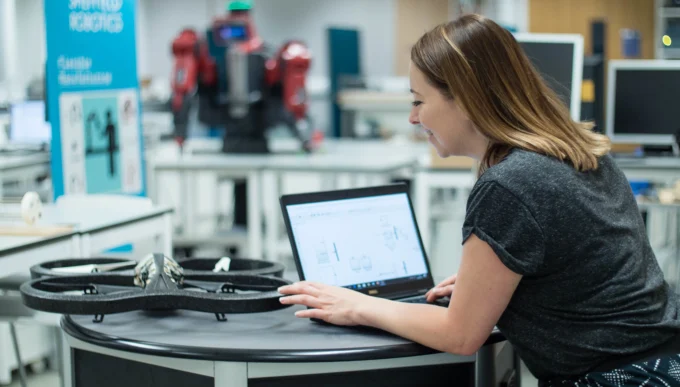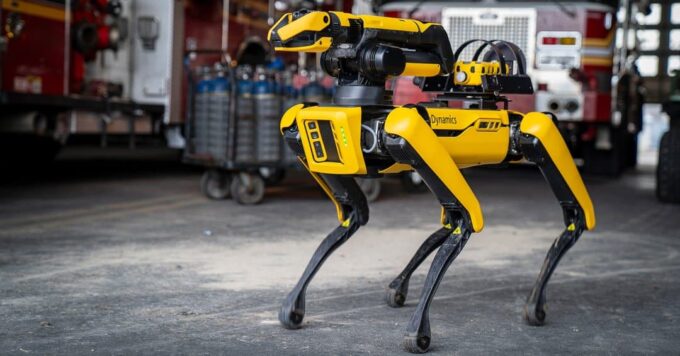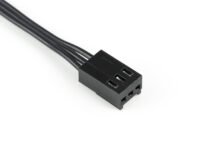The world of robotics is an intriguing and expansive field, combining elements of engineering, programming, and critical problem-solving in a manner that is both challenging and immensely rewarding. For those just beginning their journey into this domain, the initial steps may seem daunting, but it’s a path well worth traversing. This guide is designed to provide newcomers with the foundational knowledge and practical advice needed to launch their venture into robotics. It is a field that not only demands technical skills but also creativity and innovation, making it an ideal pursuit for anyone with a passion for building and programming.
Selecting Your First Robotics Project

Source: udacity.com
The key to a successful start in robotics is beginning with a manageable project. While the temptation to embark on complex designs is natural, it is vital to align your first project with your current skill level. Starting small allows you to build your knowledge base and gain confidence. Initiating your robotics journey with projects like a basic line-following robot or a simple automated vehicle lays a strong foundation. These projects provide a practical understanding of fundamental components and their roles in robotics, offering a hands-on experience without overwhelming you with technical complexities. This step is about learning the basics and appreciating the process of building from the ground up. Check out ELECFREAKS and discover the best robotics building guide.
Familiarizing Yourself with Robotics Components
At the heart of every robot are its core components: power sources, sensors, controllers, and actuators. For beginners, understanding these elements is crucial. The power source, typically batteries for simpler projects, provides the necessary energy. Sensors, such as infrared or ultrasonic, allow the robot to perceive its surroundings. Controllers like Arduino or Raspberry Pi serve as the brain of the robot, where all the processing and decision-making occur. Actuators, including motors and servos, act as the muscles, enabling movement and action. Gaining a clear understanding of each component’s function and how they interconnect is fundamental to building functional robots.
Equipping Yourself for Robotics
A proper set of tools is essential for anyone serious about delving into robotics. Basic tools like a soldering iron, screwdrivers, pliers, and wire cutters are indispensable. As you progress, a multimeter becomes crucial for more intricate work, such as diagnosing circuit issues or verifying connections. Equally important is having access to a computer for programming your creations. It’s also vital to establish a dedicated workspace. A well-organized, clutter-free area not only makes the building process more efficient but also more enjoyable. This space becomes your personal lab, where ideas come to life.
The Role of Programming in Robotics

Source: futurelearn.com
Programming is a pivotal aspect of robotics, acting as the language through which you communicate with your robot. It might initially appear challenging, but there are several beginner-friendly platforms and languages available. Arduino, utilizing a form of C++, is widely favored by beginners for its straightforwardness and robust community support. Starting with basic programming tasks like controlling motors and reading sensor data is advisable. Gradually, you can venture into more complex programming challenges. Utilizing resources like online tutorials and forums can significantly aid in this learning process.
Mastering the Art of Troubleshooting
Troubleshooting is an essential skill in robotics. It’s common for projects not to work as expected on the first try, but this shouldn’t be a source of discouragement. Instead, view these moments as valuable learning opportunities. Start by examining connections, reviewing your code, and testing individual components. Often, the problem can be something simple, such as a loose connection or a coding error. Developing a systematic approach to troubleshooting will not only solve immediate issues but also enhance your problem-solving skills in the long run.
The Value of Joining a Robotics Community
The robotics community is a vast and supportive network. Engaging with this community through online forums, local clubs, or workshops can exponentially enrich your learning experience. These platforms offer an avenue for support, advice, and inspiration. Sharing your projects and challenges contributes to this community’s collective knowledge and is an excellent way to learn from others’ experiences. Remember, every expert in robotics once started as a beginner. Engaging with a community fosters a sense of belonging and can provide motivation and guidance.
Prioritizing Safety in Robotics

Source: bostondynamics.com
Safety is of utmost importance when working on robotics projects. Proper handling of tools and awareness of electrical safety are fundamental. Be cautious with soldering irons and other heated equipment, and be mindful of electrical safety, especially when dealing with higher voltage components. Keeping your workspace organized is not just about efficiency; it’s also about preventing accidents. If you’re ever unsure about how to safely handle a particular task, it’s always wise to seek guidance from more experienced individuals.
Advancing in Your Robotics Journey
After mastering the basics and completing a few projects, you’ll be well-prepared to take on more advanced robotics challenges. This could involve integrating sophisticated sensors, exploring different programming languages, or designing your own robots from scratch. The skills and knowledge you’ve acquired form a solid foundation upon which you can build. As you progress, the complexity of your projects will increase, but so will your capability to handle them. Robotics is a field of continuous learning and innovation, and as you advance, the possibilities become limitless.
Expanding Your Knowledge
As you delve deeper into the world of robotics, expanding your knowledge becomes crucial. This continuous learning process involves exploring various resources and engaging in further education. Books, online courses, and tutorials are excellent ways to enhance your understanding. Look for resources that not only cover the technical aspects of robotics but also encourage creative thinking and problem-solving. Engage in projects that push your boundaries and introduce you to new technologies. Keep an eye on the latest developments in robotics; the field is ever-evolving, with new advancements and techniques emerging regularly.
Conclusion

Source: linkedin.com
Embarking on a robotics journey is an exciting endeavor that opens doors to a world of innovation and creativity. It’s a field that continuously evolves, offering endless opportunities for learning and growth. Remember, the journey is as important as the destination. With patience, practice, and perseverance, the complexities of robotics that once seemed daunting will become second nature.







